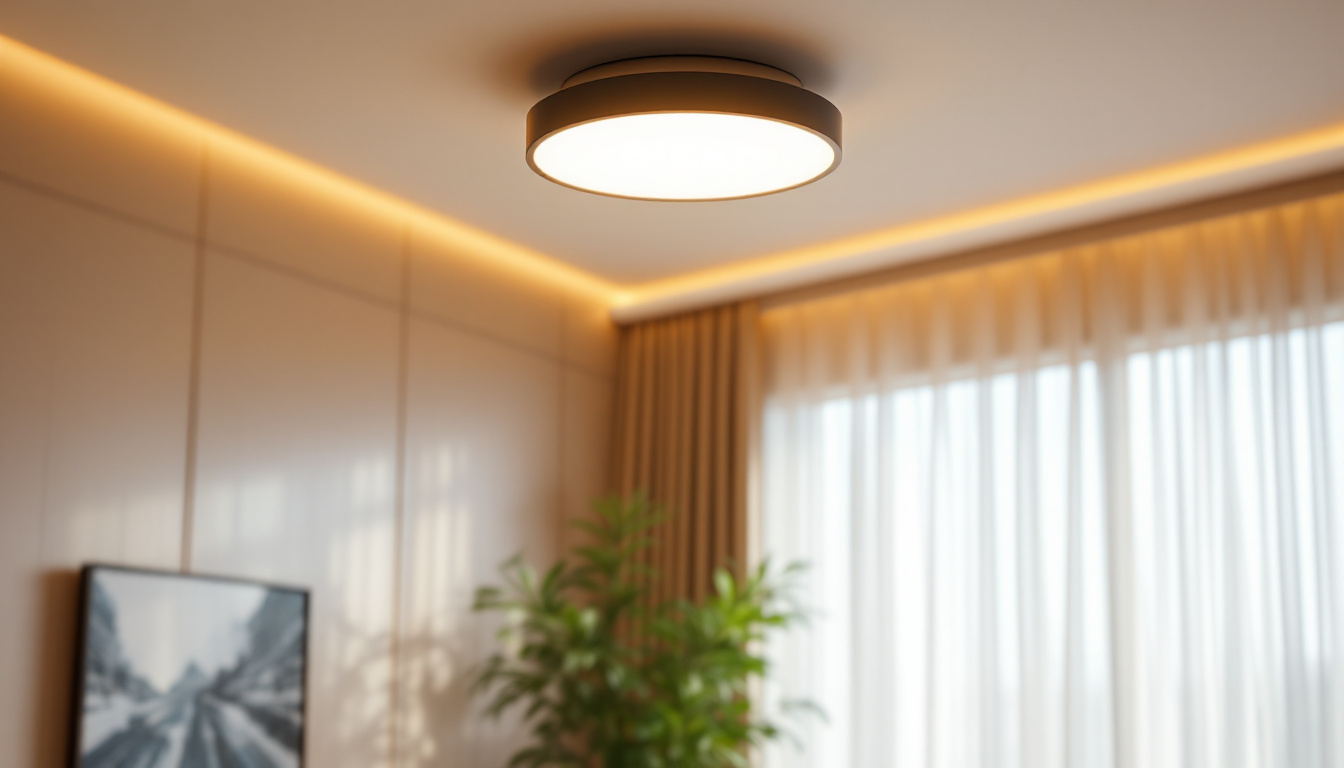
Flush lights are a popular choice for both residential and commercial spaces, providing a sleek, modern look while efficiently illuminating areas without taking up valuable space. For lighting contractors, understanding the nuances of flush lighting is essential for delivering high-quality installations that meet client expectations. This article delves into the various aspects of flush lighting, including types, installation considerations, and design tips.
Flush lighting fixtures are mounted directly to the ceiling, creating a seamless appearance that is both functional and aesthetically pleasing. These fixtures are particularly beneficial in spaces with low ceilings, where traditional hanging lights may pose a hazard or disrupt the visual flow of the room. Additionally, flush lights can enhance the overall ambiance of a room, providing a clean and modern look that complements various interior design styles. Their unobtrusive nature allows for a more open and airy feel, making them a popular choice in contemporary homes.
Flush lights come in various styles and designs, catering to different tastes and functional needs. Some common types include:
Each type of flush light has its own set of advantages and ideal applications, making it important for contractors to assess the specific needs of their clients before making recommendations. For instance, while standard flush mounts may suit traditional homes, LED options might be more appropriate for eco-conscious clients looking to reduce their carbon footprint.
Flush lights are versatile and can be used in a variety of settings. Common applications include:
Understanding these applications allows lighting contractors to better serve their clients by recommending the most suitable flush lighting solutions for their specific environments. Furthermore, considering factors such as bulb type, brightness, and dimming capabilities can greatly influence the effectiveness of flush lighting in achieving the desired atmosphere and functionality in any space.
Proper installation of flush lights is crucial for optimal performance and safety. Here are several key considerations that contractors should keep in mind:
Before installing flush lights, it is essential to assess the electrical requirements of the fixture. This includes checking the voltage, wattage, and compatibility with existing wiring. Ensuring that the electrical system can handle the load of the new fixtures is vital to avoid potential hazards.
Flush lights typically require a mounting bracket that secures the fixture to the ceiling. Contractors should ensure that the bracket is properly installed and that the fixture is level. Additionally, it is important to consider the type of ceiling—whether it is drywall, plaster, or another material—as this may affect the mounting process.
Strategic placement of flush lights can significantly enhance the overall lighting design of a space. Contractors should consider factors such as:
Taking these factors into account will help ensure that the flush lighting installation meets both aesthetic and functional needs.
Flush lights can enhance the design of a space while providing adequate illumination. Here are some design tips for contractors to consider:
When selecting flush lights, it is essential to choose a style that complements the overall design of the space. For instance:
Understanding the client’s design preferences will help contractors recommend the most suitable fixtures.
Flush lights can be used in conjunction with other lighting sources to create a layered lighting effect. Combining flush lights with task lighting, accent lights, and natural light can enhance the ambiance of a space. For example:
By layering light, contractors can help clients achieve a more dynamic and inviting atmosphere.
The color temperature and brightness of flush lights can significantly impact the mood of a space. Contractors should educate clients about the different options available:
By considering color temperature and brightness, contractors can help clients select flush lights that enhance the desired ambiance of their spaces.
With growing awareness of environmental issues, energy efficiency and sustainability are becoming increasingly important in lighting design. Flush lights, especially LED options, can play a significant role in reducing energy consumption.
LED flush lights offer numerous advantages over traditional incandescent or fluorescent fixtures:
Contractors should encourage clients to consider LED options for their flush lighting needs, highlighting the long-term benefits of energy efficiency.
In addition to selecting energy-efficient fixtures, contractors can adopt sustainable practices during installation:
By embracing sustainability, contractors can not only meet client demands but also contribute to a greener future.
While flush lighting installations can be straightforward, contractors may encounter challenges along the way. Here are some common issues and potential solutions:
One common challenge is achieving consistent lighting throughout a space. This can occur when fixtures are improperly spaced or when there are obstructions that cast shadows. To address this issue:
Another challenge may arise when clients wish to use flush lights with existing dimmer switches or smart home systems. To ensure compatibility:
By proactively addressing these challenges, contractors can enhance client satisfaction and ensure successful installations.
Flush lights are a versatile and stylish lighting solution that can enhance any space. For lighting contractors, understanding the various aspects of flush lighting—from types and installation considerations to design tips and energy efficiency—is essential for delivering high-quality results. By staying informed and adapting to client needs, contractors can ensure that their flush lighting installations not only meet but exceed expectations.
As the demand for innovative and sustainable lighting solutions continues to grow, contractors who embrace the latest trends and technologies in flush lighting will be well-positioned for success in the industry.
Ready to elevate your lighting projects with the finest flush lights on the market? Look no further than LumenWholesale, where we offer an exceptional range of spec-grade lighting products at unbeatable wholesale prices. Say goodbye to local distributor markups and hello to superior quality without the inflated cost. Our extensive selection is designed to meet the highest industry standards, ensuring you deliver outstanding, reliable lighting solutions every time. With the convenience of free shipping on bulk orders, LumenWholesale is your go-to source for premium lighting at the best value. Wholesale Lighting at the Best Value is just a click away. Transform your lighting installations today with LumenWholesale.

Discover essential tips and common pitfalls for lighting contractors in our guide to commercial exterior LED lighting fixtures.

Explore the future of lighting design and installation with innovative outlets for light fixtures.

Discover innovative cost-saving strategies for lighting contractors focusing on power cables.

Discover the essential role of Type B lamp bulbs in modern lighting projects.